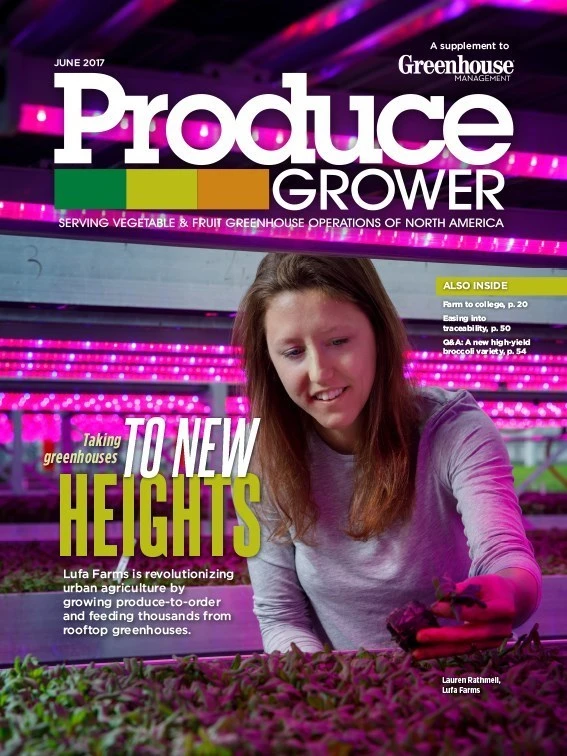
In our third year of conducting research about hydroponic produce growing, we see that the hydroponics has maintained steady interest and still has a lot of growth potential. No matter the region, hydroponic growing has many benefits, including the possibility to extend the growing season and offer a local product to the community.
Jerry Conner, vice president of Four Oaks Farms in Wirtz, Va., is proud of what his hydroponic operation has allowed him and co-owner and wife Joyce to do. “We have enjoyed being able to provide several schools/colleges in the area with fresh lettuces/greens in the winter,” Conner says. “We have enjoyed the level of acceptance of our products by the students in the schools. It is a good feeling to know the students enjoy having a fresh salad from our farm.”
For combined field and hydroponic growers like Bartlett’s Farm in Nantucket, Mass., hydroponics has allowed the company to diversify and extend the season. “The hydroponic system is a great complement to our traditional production and it has given us the ability to extend the availability of our fresh produce into the shoulder season and possibly year-round, which I am excited about,” says Andrew Spollett, vegetable production manager. “I believe hydroponic growing is one piece of the puzzle to feeding the world population in the future, but it does not represent a silver bullet for ending hunger.”
Grower-retailer Dave Tyznik, owner of Planter’s Palette in Winfield, Ill., finds the increased efficiencies and yields beneficial. “I think the opportunity to grow under cover, and [use] hydroponics lends itself very well to [low-cost production and mechanization],” he says. “Since a high level of management is required, you get a higher yield. There’s more risk to it, but if you’re good at it and you can manage that risk, the returns are better, and you can produce an awful lot of product in a small amount of space.”
These growers, and others, weigh in on systems, production challenges, crops and more in this year’s State of Hydroponic Produce Growing Report. On page S17, you’ll find this month’s Hydroponic Production Primer; Christopher Currey shares best practices for preventing and treating diseases in hydroponic crops.

Explore the June 2017 Issue
Check out more from this issue and find your next story to read.
Latest from Produce Grower
- The Growth Industry Episode 3: Across the Pond with Neville Stein
- PG CEA HERB Part 2: Analyzing basil nutrient disorders
- University of Evansville launches 'We Grow Aces!' to tackle food insecurity with anu, eko Solutions
- LettUs Grow, KG Systems partner on Advanced Aeroponics technology
- Find out what's in FMI's Power of Produce 2025 report
- The Growth Industry Episode 2: Emily Showalter on how Willoway Nurseries transformed its business
- 80 Acres Farms expands to Georgia, Texas and Colorado
- How BrightFarms quadrupled capacity in six months






